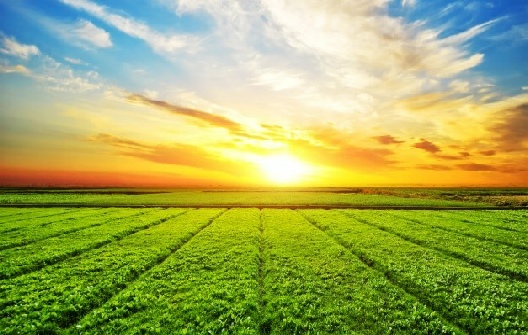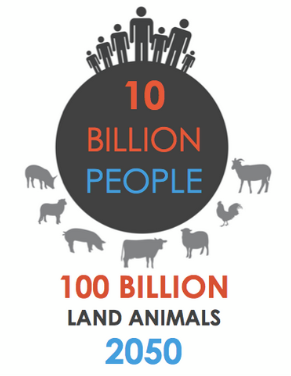WATER AND AGRICULTURE
ASSESSING FRESHWATER NEEDS FOR GLOBAL FOOD PRODUCTION
The amount of water involved in food production is significant. Most of it is provided directly by rainfall. A rough calculation of global water needs for food production can be based on the specific water requirements to produce food for one person. Depending on the composition of meals and post-harvest losses, the average food ingest of 2 800 kcal/person/day requires roughly
1.000 m3 water per year.
Thus, with a world population of 7.7 billion people, water needed to produce the necessary food is 7.700 km3 (excluding any conveyance losses associated with irrigation systems).
Approximately 40 percent of water that is withdrawn from rivers, lakes and aquifers for agricultural irrigation is effective - in terms of yield - and contributes to crop production.
The remainder - 60%- is lost to evaporation, deep infiltration or the growth of weeds.
WATER FOR FOOD PRODUCTION
Agricultural water use is intrinsically consumptive.
For vegetative growth and development, plants require water within reach of their roots.
This water needs to be:
- of adequate quality
- in appropriate quantity
- at the right time.
Most of the absorbed water performs the function of transport of dissolved nutrients from the soil. Plants and crops release water to the atmosphere by transpiration.
Crops have specific water requirements and these vary depending on local climatic conditions.
The production of meat requires between six and twenty times more water than for cereals, depending on the feed/meat conversion factor.
RAINFED AGRICULTURE
Non-irrigated (rainfed) agriculture depends entirely on rainfall stored in the soil profile. This form of agriculture is possible only in regions where rainfall distribution ensures continuing availability of soil moisture during the critical growing periods for the crops. Non-irrigated agriculture accounts for some 60 percent of production in the developing countries. In rainfed agriculture, land management can have a significant impact on crop yields: proper land preparation leading surface runoff to infiltrate close to the roots improves the conservation of moisture in the soil.
Various forms of rainwater harvesting can help to retain water in the soil. Rainwater harvesting not only provides more water for the crop but can also add to groundwater recharge and help to reduce soil erosion. Other methods are based on collecting water from the local catchments and either relying on storage within the soil profile or local storage such as ponds or other structures for use during dry periods. Conservation agriculture practices such as conservation tillage have proven to be effective in improving soil moisture conservation.
The potential to improve non-irrigated yields is restricted where rainfall is subject to large seasonal and inter-annual variations. With a high risk of yield reductions or complete loss of crop from dry spells and droughts, farmers are reluctant to invest in inputs such as plant nutrients, high-yielding seeds and pest management. For resource-poor farmers in semi-arid regions, the overriding requirement is to harvest sufficient food stuff to ensure nutrition of the household through to the next harvest. This objective may be reached with robust, drought-resistant varieties associated with low yields. Genetic engineering has not yet delivered high-yield drought-resistant varieties, a difficult task to achieve because, for most crop plants, drought resistance is associated with low yields.
ROLE OF IRRIGATION IN FOOD PRODUCTION
In irrigated agriculture, water taken up by crops is partly or totally provided through human intervention. Irrigation water is withdrawn from a water source (river, lake or aquifer) and led to the field through an appropriate conveyance infrastructure. To satisfy their water requirements, irrigated crops benefit from both more or less unreliable natural rainfall, and from irrigation water. Irrigation provides a powerful management tool against the vagaries of rainfall and makes it economically attractive to grow high-yield seed varieties and to apply adequate plant nutrition as well as pest control and other inputs, thus giving room for a boost in yields.
Future water withdrawals for irrigation
Irrigation water withdrawal in developing countries is expected to grow vastly.







 WATER DEMAND
WATER DEMAND GROUNDWATER DEPLETION IS ACCELERATING
GROUNDWATER DEPLETION IS ACCELERATING FRESH WATER STRICTLY LIMITED
FRESH WATER STRICTLY LIMITED  THE WEATHER PENDULUM BETWEEN INTENSE DROUGHTS AND FLOOD
THE WEATHER PENDULUM BETWEEN INTENSE DROUGHTS AND FLOOD